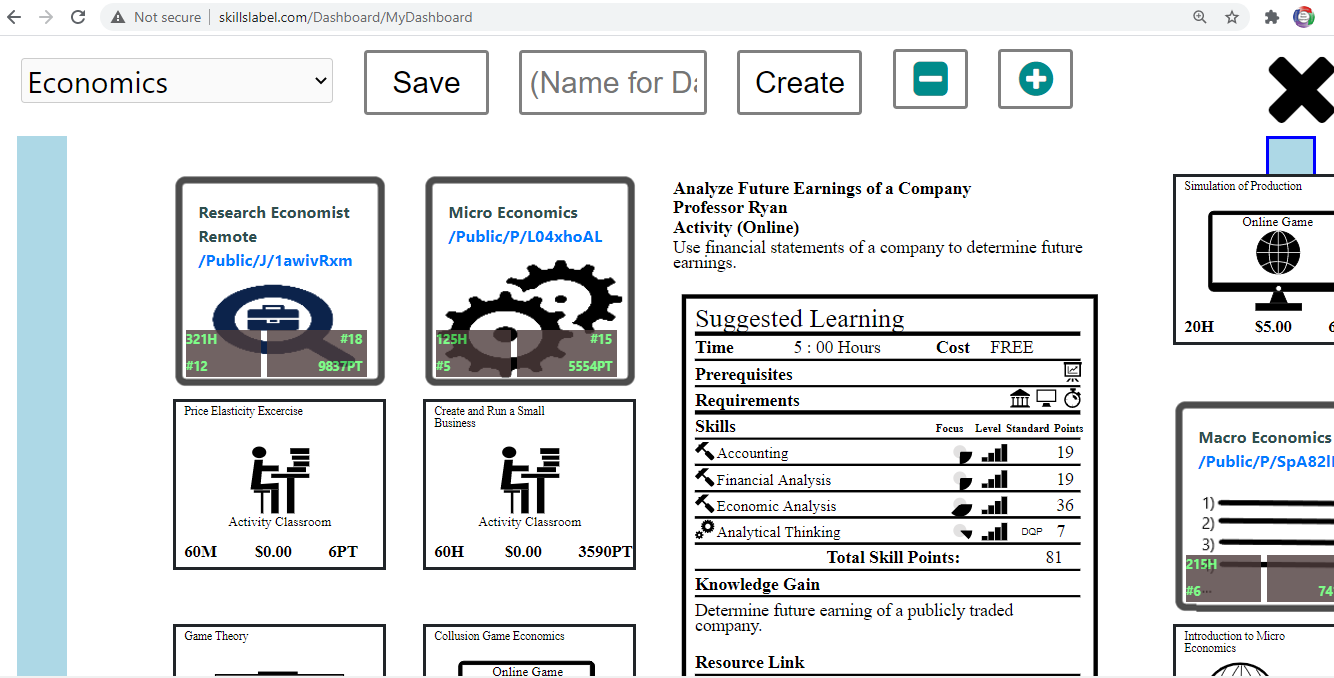Started to think how blockchain could be a useful way to track a person’s progress in acquiring skills. The proposal: a ledger tracks each person’s skills; the verification process is a peer review or crowd sourcing; and Skill Points ® are the currency (slightly different than simply credentials). What are Skills Points ® and how is this different than a traditional education and higher education framework?
Within creating learning pathways (dashboards), there is an apparatus for defining and quantifying learning expectations and job requirements using skills and Skill Points ®. Skills are the medium to do so.
Skills are the language of learning. Skills are the verb of knowledge.
The basis of the system is to create learning labels on a task / experience level. Make the quantifying process as accurate as possible on a skill by skill basis, using a science-based algorithm that gets better through time (Skill Points 2.0). Some ideas on doing this are described in the Learning Labels book.
Aggregate Skill Points ® on the learning labels for a project / lesson plan, course, and job level to design learning pathways. Much of this framework is already designed and coded in an online application; see this proof of concept video:
This is a bottom up approach, which is different than the traditional top down approach – each has advantages:
A top-down approach is defining learning on a credential, course, or job level. The advantage is focusing most of the attention on an accurate assessment, not worrying on tracking learning on a detailed task level. It is easier to match results to macro level demands (like workforce development).
A bottom-up approach is defining learning on tasks and then aggregating them together for higher level elements.
Define learning expectations and job requirements in skills and Skill Points ® like we define substances in atoms and coefficients.
The Skills Label TM system is designed on an accurate definition process of tasks and experiences, then build them up. (Similar to, but more than the bite sized learning in the micro credential movement.) The advantage is stacking tasks or experience in different ways to get desired results. Practitioners pivot between tasks easier. Finally, the definition process is meant to be static and once create used by all.
A big part of the initial design is to provide a human centered framework for learners to make choices - a platform for basis of comparison decisions. Learners choose between tasks whenever possible.
The learning label system also provides qualitative support of each element (labels, projects, courses, and jobs) with a unique website and URL, with added functionality to support them. For example, a course page allows learners to choose tasks and print a PDF syllabus.
